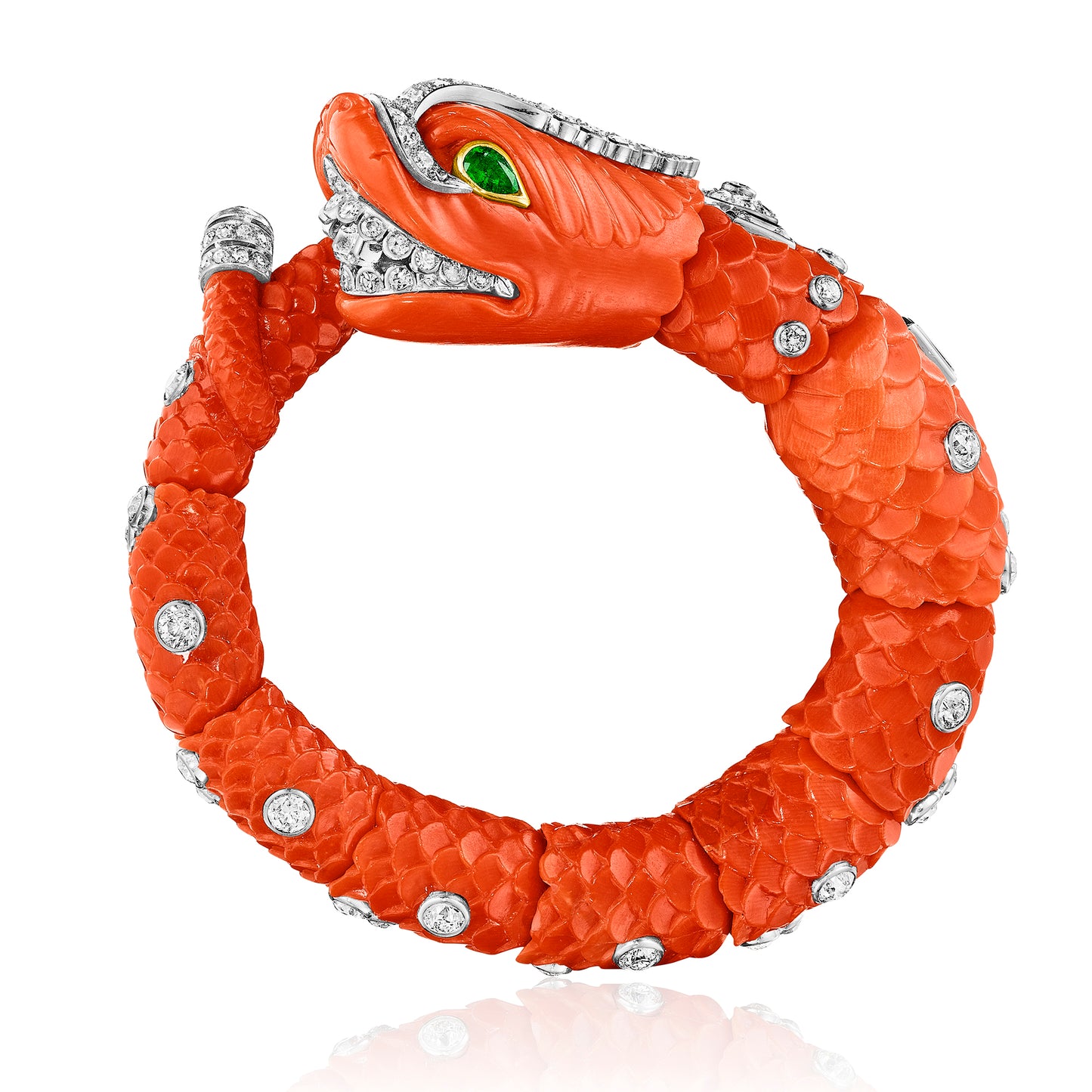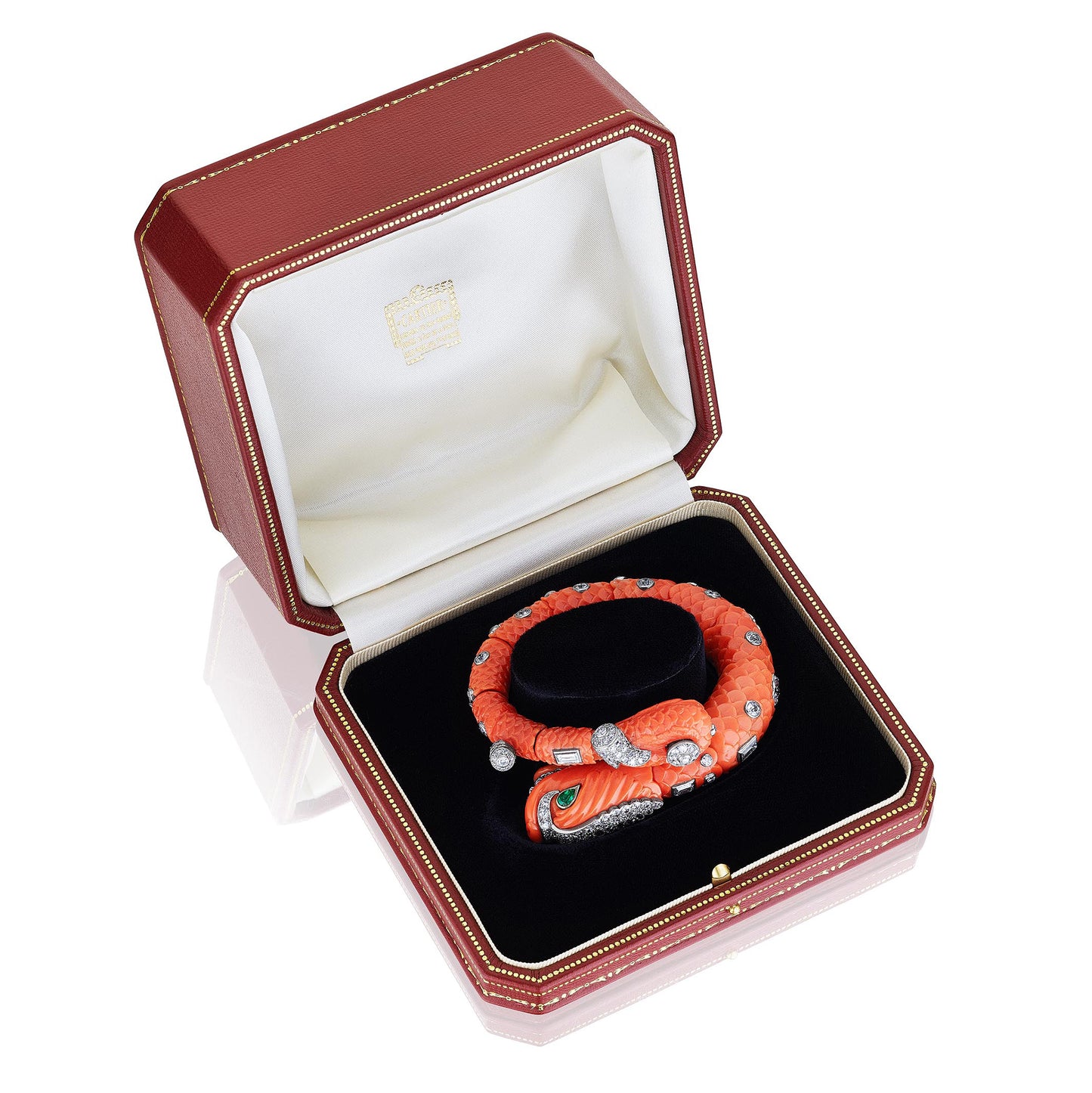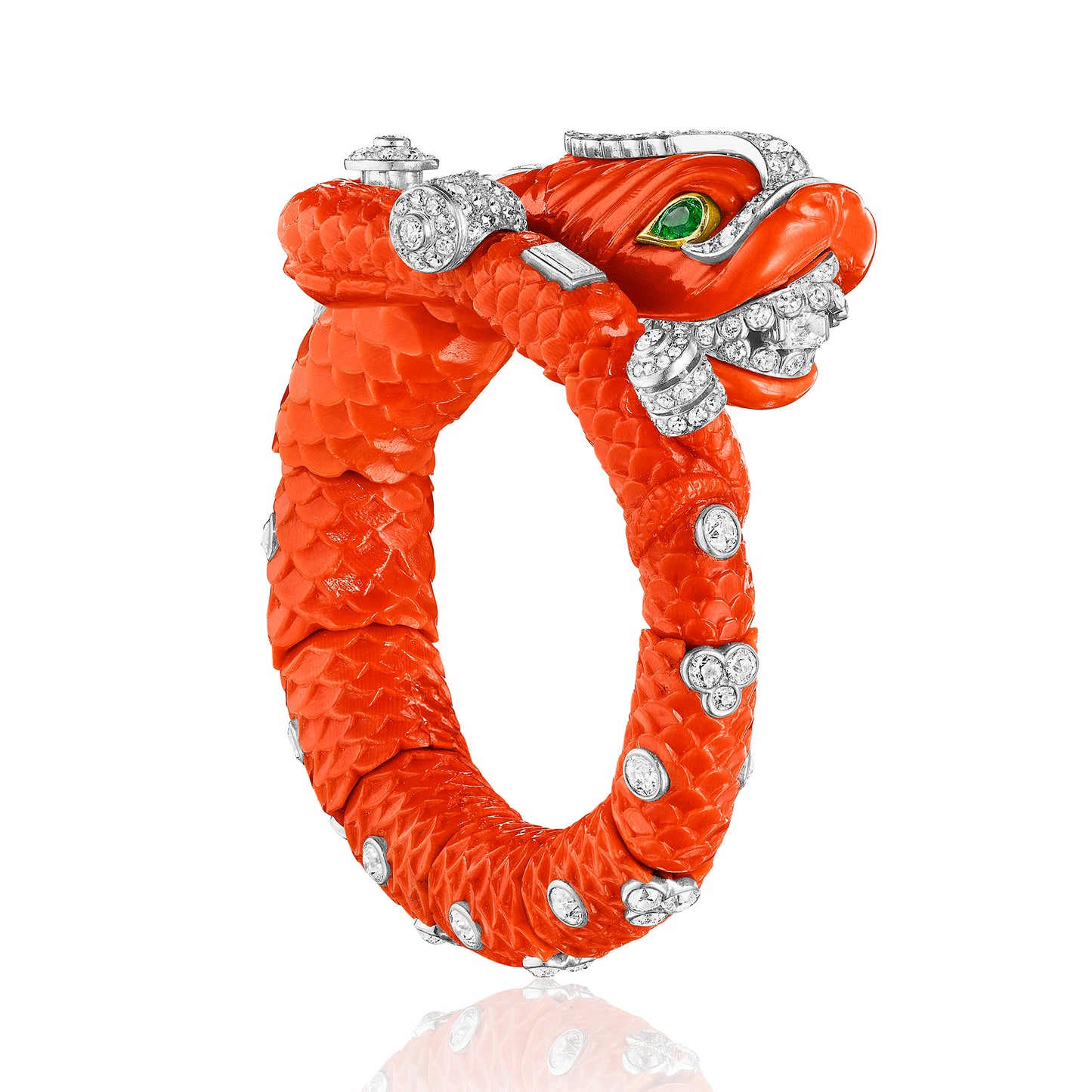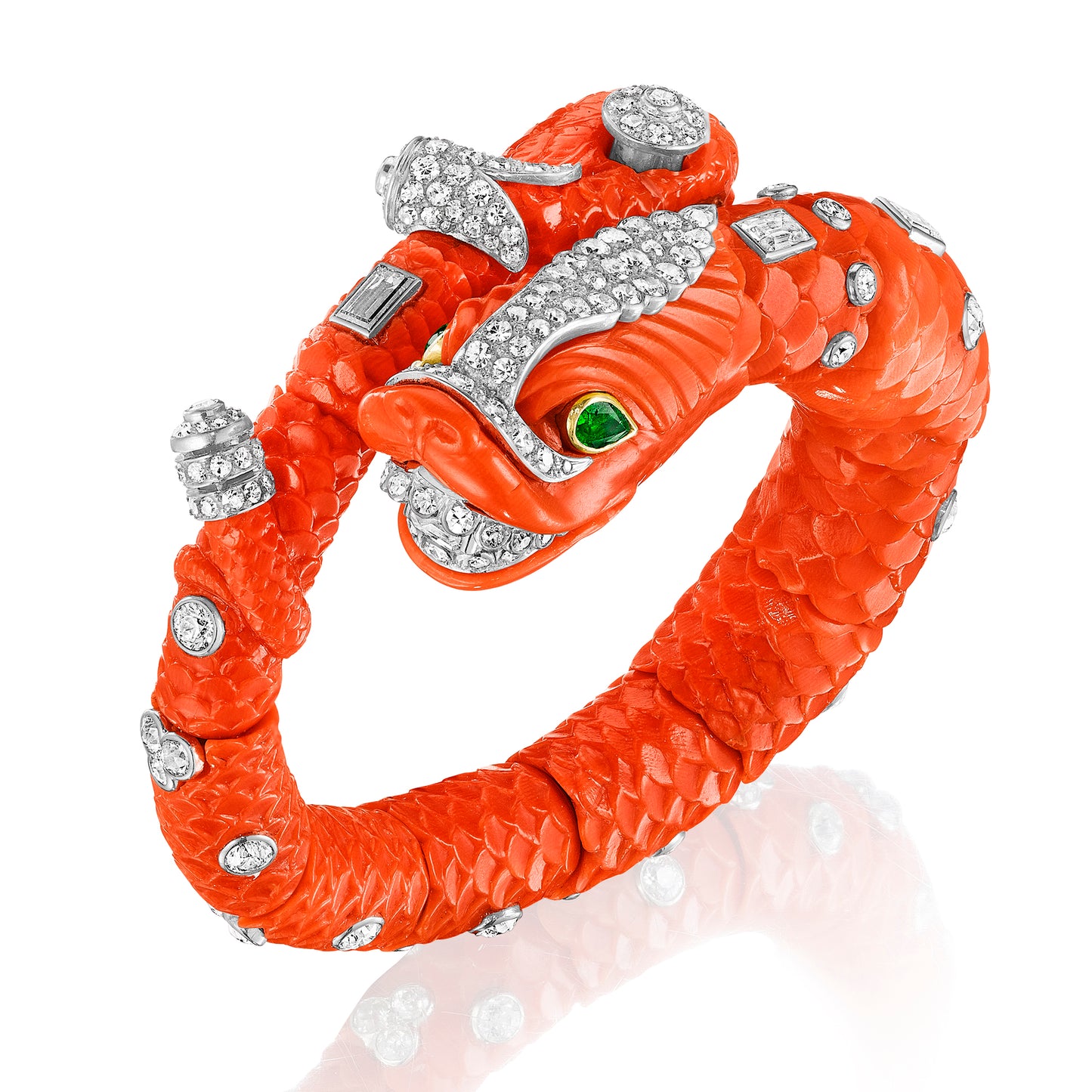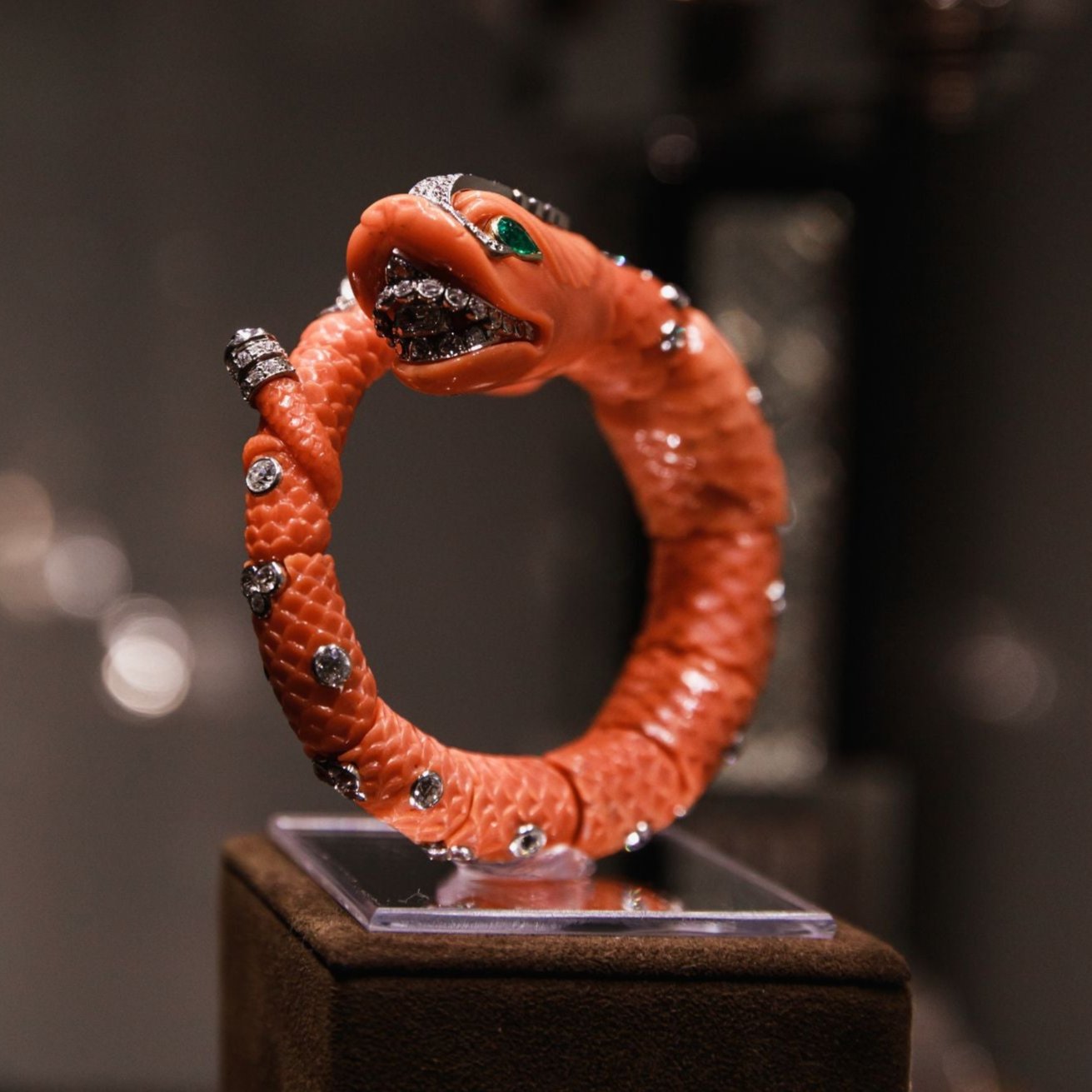CARVED CORAL, EMERALD, AND DIAMOND CHIMERA BANGLE BY CARTIER, PARIS, CIRCA 1960
CARVED CORAL, EMERALD, AND DIAMOND CHIMERA BANGLE BY CARTIER, PARIS, CIRCA 1960
A bracelet designed as a carved coral chimera, terminating in a dragon head, with a body composed of coral segments carved with serpent scales, embellished with diamonds and with teardrop emerald eyes, set on a flexible band that coils around the wrist; mounted in platinum and yellow gold, with French assay marks
- 2 pear-shaped emeralds
- Signed Cartier, Paris
- Measurements: 3 x 3 1/8 x 5 /8 inches, inner circumference: 5 inches
Additional cataloguing
Literature
Chaille, François. The Cartier Collection: Jewelry. Paris: Éditions Flammarion, 2004, p. 302.
Biography
Cartier was founded in Paris in 1847 by Louis-François Cartier. His three grandsons, Louis, Pierre, and Jacques, built the house into a famous international jewelry empire serving royalty, Hollywood stars, and socialites. Cartier has created some of the most important jewelry and objects of art of the twentieth century with many iconic designs such as mystery clocks, Tutti Frutti jewelry and the Panthère line. In 1983, The Cartier Collection was established with the objective of acquiring important pieces that trace the firm’s artistic evolution. Today, Cartier has 200 stores in 125 countries.
Significance
In 1923, Louis Cartier created a cliquot pin with a pink coral chimera head studded with diamonds and emeralds set in gold and platinum. This important pin was the first of the Art Deco chimeras and what would become an iconic Cartier form. The Chimera is a mythological figure with roots in many ancient civilizations typically depicted with the head of a lion, body of a goat, and tail of a dragon. The Chinese chimera, the figure that most closely relates to the Cartier form, is a symbol of longevity and success interchangeable with a dragon. Cartier went on to create several chimera bracelets from 1927 to 1929.
In 1933 Jeanne Toussaint took over as director of the luxury jewelry department. She moved the company away from the structured jewels of the Art Deco and into more figurative pieces that brought playfulness to the dark times of World War II. Toussaint remained deeply connected to the design roots of the company—after all she was the inspiration for the panthère—and looked back to the important chimera bangles, reviving the design in the late 1940s when the Duchess of Windsor purchased a pink coral chimera bangle. Daisy Fellowes purchased an example in 1961, similar to this one, that is now in the Cartier Collection.
Designed as a cuff with the body of a serpent and the head of a dragon, this piece recalls the antique form of bangles terminating in animal heads found in many ancient Middle Eastern and Mediterranean civilizations from Assyria to Greece. Louis Cartier combined the ancient bracelet form with the Chinese chimera mythology, and Toussaint modernized the design with oversized decorative motifs of Indian inspiration encrusted with diamonds and emeralds providing pops of color. According to Hans Nadelhoffer, this bracelet would have taken 250–300 painstaking hours for skilled artisans to create. Cartier designers created precise drawings for the Durand lapidary workshop where the bangle was carved from a particular pink coral stalk available from Japan only through the Italian dealer Borelli. The bracelet was then taken to the Lavabre workshop for jewel setting and assembly. The completed jewel, uniting mythology, precious materials, and fine craftsmanship is a magnificent piece created for a woman of self-assurance and refinement.
